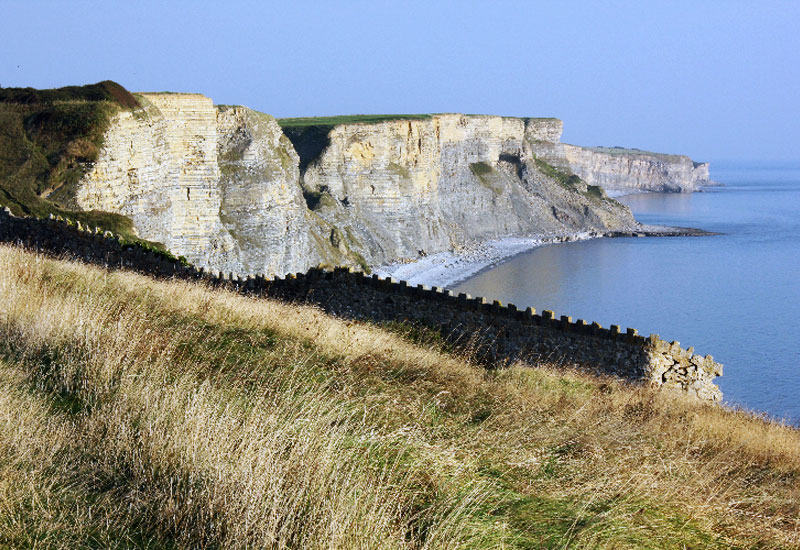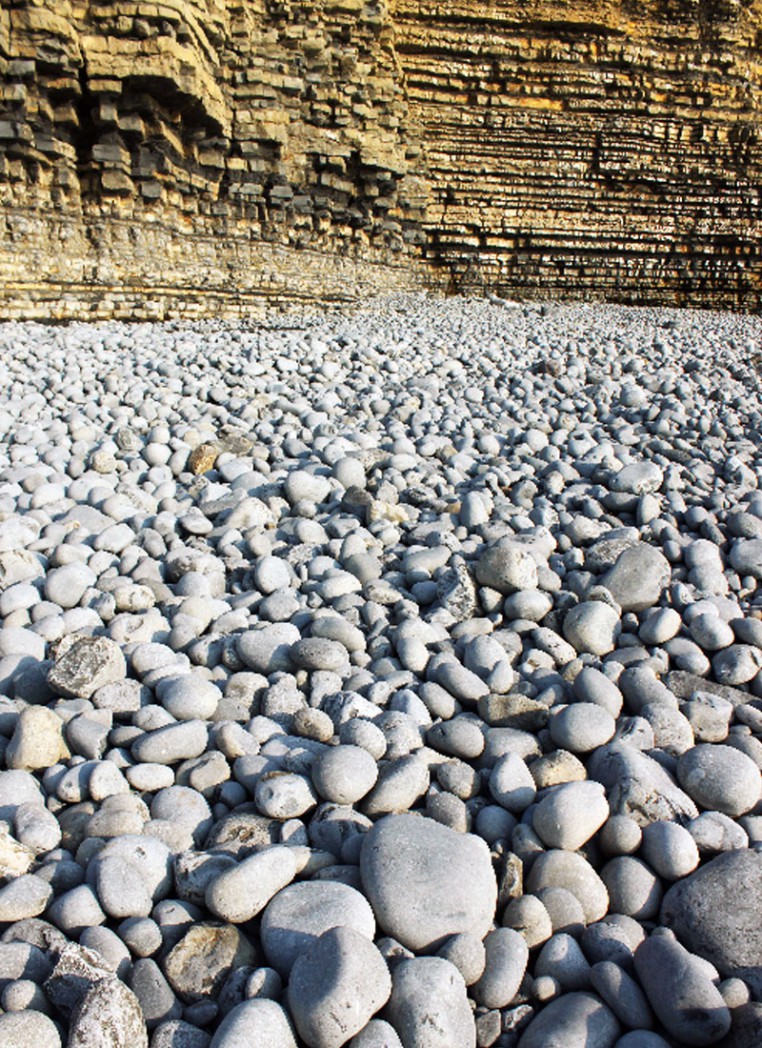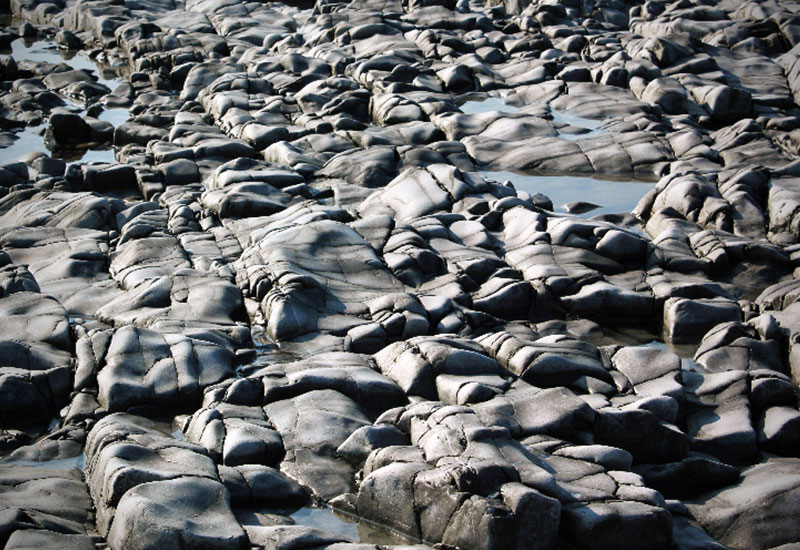As John drove us towards the coast, I tried to remember a childhood trip to Ogmore-by-Sea. All I could recall was a hazy memory of cliffs, and the atavistic thrill of throwing rocks off them and trying to smash them. The road followed the River Ogmore, which ambled through grassland before flowing over the beach and into the sea. None of the approach or the beauty of the estuary seemed familiar, and once we arrived I stood looking out over the long, wide bay, in disbelief. How had I forgotten that there was such an expansive beach?
There were a healthy number of people there, all busying themselves in their chosen way: sunbathing; reading; cooking on disposable barbeques. In front of me, a lone figure sat on a bench. He was silhouetted by the afternoon sun, looking down towards a screech of seagulls on the other side of the river. John and I headed in the direction of the man’s gaze, first clambering over smooth limestone paving, then testing the depth of the river. The idea was to cross over safely, so I could photograph the birds. I became so engrossed in this task, that I almost didn’t notice them taking to the skies in their hundreds. They were criss-crossing around us, all crying and complaining about whatever it is that upsets them.
The gulls eventually settled, and we turned our attention to the sea. Having spent the majority of my time with John in the creative writing class he taught at university, some coastal swimming made for a very different experience. The sea stays shallow even as you go further out, but is deep enough to swim in. A strong current pulled us along the beach, and when I swam against it I felt as if I wasn’t moving at all. I noticed, as I submerged my head, that there was a centimetre of colder water on the surface, perhaps something to do with the density of the brackish water from the estuary. We stayed in for a while, leisurely paddling around and disagreeing about the temperature of the water, until the rising tide threatened to swallow our belongings.
After Ogmore, we headed down the coast to Dunraven Bay, a beach framed on either side by crumpled cliffs. The beach consists of large pebbles, which gave way under my weight as I walked over them, making a string of tapping sounds as they shifted position. People were paddling in the shallow water, some keeping in the shade of the cliff’s shadow. The face of the cliff is an obvious example of sedimentary rock, with a number of layers all broken up into what looks like golden bricks.
From the bay we walked uphill, along a path which goes through Dunraven Park and its walled gardens, which John told me used to form part of a castle. We passed through a turnstile to reach the highest point, where we could see cliffs stretching off into the distance. The British weather, though famed for its mutability, had dealt us a good hand today. There was only the warm rub of a summer breeze drifting up over the edge, so I felt safe enough to peer over and watch the waves breaking on a small bay far below.
The path continued through long grass, dry after the summer months. Seeding dandelions were scattered on either side, all backlit by the sun. Further along, an old brick wall was slowly tumbling off the cliff edge, an echo of the crumbling cliffs behind it. It marked a change of course in the path which now headed inland, and around a little valley. There wasn’t enough time to carry on walking, but we stayed for a short while to watch a flock of birds just above the cliff on the other side of the valley. They were flitting around in unison, much as a shoal of fish would underwater.
It was almost high tide, and all that was visible of the shore was a narrow stretch of beach. At low tide, however, hundreds of metres of sand and limestone are revealed. There is a myth in the local area that ‘organised shipwrecking’ used to take place along the Vale of Glamorgan’s coastline. Supposedly, false lights were used to trick passing sailors into thinking they were seeing a lighthouse, luring them to destruction. Imagining the hidden expanses of limestone, and thinking back to how I walked out of the sea earlier that day, tripping repeatedly on barely submerged rocks, the myth doesn’t seem so hard to believe.



We lingered by the valley, half mesmerised by the birds. The sky was still a lively cerulean, but the sun was now mid-way through its descent, so we eventually decided to start the journey back to the car park, and home.
Chris Humphrey is a landscape and people photographer. He is currently based in Hanoi, Vietnam, although he returns to the UK for the summer months. He is particularly interested in capturing abstract patterns often found in nature, but is also interested in documentary photography and the art of telling complex stories with a single image.










